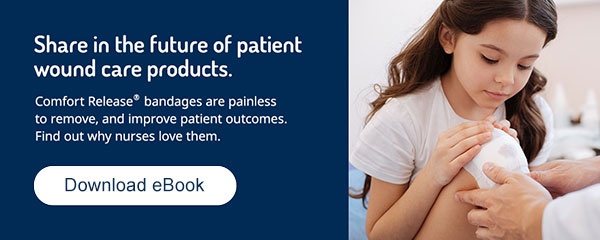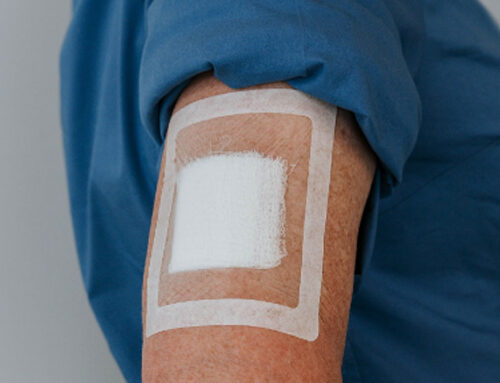As we age, our skin becomes fragile and more susceptible to trauma. This makes elderly patients uniquely prone to pressure injuries, skin tears, and impact wounds. But while medical professionals deal with geriatric skin problems around the world, they can actually be prevented and treated easily if the right precautions are taken.
Certain medications, poor nutrition, or dehydration, as well as the loss of collagen and elasticity contribute to thinning and tearing skin. If not kept in check, this deterioration can result in a higher risk of infected injuries, bruising, abrasions, and trauma wounds.
- With skin tearing, prevention is better than cure. As recommended in this WoundSource article, elderly patients should wear protective sleeves to protect themselves from bumps or snags on obstructions.
- Eating a nutritional diet that consists of fruits, vegetables, and whole grains helps maintain a healthy skin.
- Gentle-release products will help geriatric patients with drainage and injury protection, should a wound occur.
As highlighted in Today’s Geriatric Medicine, elderly patients are susceptible to xerosis due to decreased production of moisturizing sebaceous oils in their skin. Journal NursingCenter offers numerous effective ways to prevent and treat dry and itching skin in geriatric patients:
- Encourage patients to keep their skin moist with a pH-balanced soap and by applying a hypoallergenic moisturizer twice a day.
- Patients should limit the duration of baths or showers and avoid very hot water, as this can inflame the skin and disturb its natural balance.
- Prolonged exposure to sunlight can weaken elastic tissue and cause wrinkles, blotches, and skin cancer.
- Seniors should always apply sunscreen before going outside.
Age spots often occur in areas that are exposed to sunlight. If the necessary precautions are taken — sunscreen, wearing long-sleeved clothing, etc. — they are usually not a cause for concern. However, patients should recognize and understand the ABCs (and Ds and Es) of skin cancer, as highlighted by The Skin Cancer Foundation:
- Asymmetry: when one side of a mole is different from the other.
- Border: Irregularity in the mole’s outline.
- Color: Varying or splotchy coloring on the mole.
- Diameter: Anything greater than 6mm should be examined by a physician.
- Evolution: Any change in size, shape, or coloring should be examined by a healthcare professional.
Caused by harsh adhesive bandages, tapes, and dressings during application or removal, this condition can increase recovery time and further damage or infect a wound.
- When tending to elderly patients, medical professionals should use adhesive bandages, tapes, and dressings that have been specifically designed to prevent MARSI.
- Comfort Release® offers a range of products with unique polymers that promote adhesion to the skin and pain-free release. These products create an optimum healing environment that offers a painless, trauma-free experience for patients with sensitive, fragile, and thin skin.
You can read more about the symptoms and treatments of MARSI in our in-depth article here.
Choose healing aids created specifically for geriatric skin problems
Comfort Release® has created the first and only line of adhesive bandages, tapes, and dressings for the unique needs and characteristics of geriatric skin. Our revolutionary line offers clinical-strength adhesion for optimum healing and can be simply, painlessly removed to prevent any further damage to a healed wound. We’d love to send you a free sample — click here to claim yours.
For more information on our products and to learn why healthcare professionals choose Comfort Release®, download our eBook.



